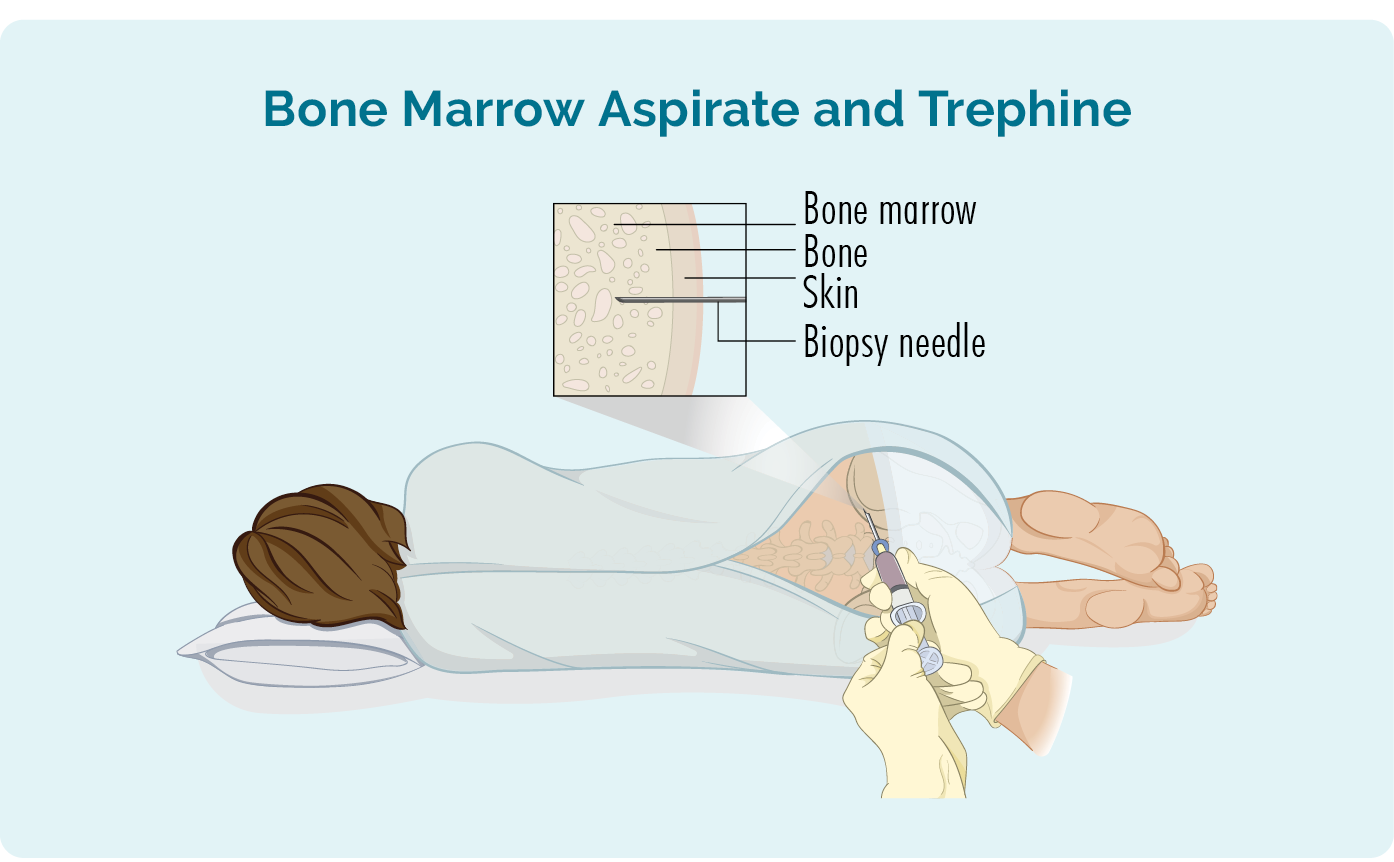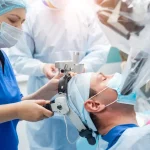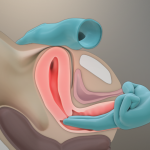A bone biopsy is where a surgeon takes a small sample of bone and sends it to the laboratory for a specialist doctor to look at under a microscope. They can find out whether an abnormal area of bone is cancer or not.
You have this test in the interventional radiology department or operating theatre with the help of an x-ray. The x-ray shows the surgeon where exactly to place the biopsy needle. It is a minor procedure. You have it under local or general anaesthetic.
Why you might have a bone biopsy
You have this test if your doctor thinks your symptoms could be caused by cancer. If it is cancer, the biopsy result will show what type of cancer it is and other features that help your doctor decide on the best treatment for you.
Some bone tumours are not cancerous (benign) and can’t spread. Doctors may diagnose these types of tumours from the x-rays or scans and do not always need to take a biopsy.
A bone biopsy is a highly specialised procedure. If your doctor suspects you may have bone cancer, ask for the biopsy to be done at the specialist centre where you would be treated if it is cancer.
Preparing for your biopsy
You meet your surgical team before your biopsy. They will talk to you about the risks and benefits and ask you to sign a consent form. This is a good time to ask any questions you may have.
Before your test
Medicines
Take your medicines as usual unless your doctor tells you otherwise. If you take medicines to thin your blood, you might need to stop these before your biopsy. Your doctor will let you know when to stop.
Tests
You have some tests before the biopsy such as:
- blood tests
- a test to check the health of your heart (a heart trace or ECG)
Your doctor or nurse will explain the tests you need.
Eating and drinking
You might have this test under general anaesthetic, which means you will be asleep for the procedure.
You usually can’t eat for around 6 hours before having a general anaesthetic. You can drink water for up to 2 hours beforehand.
Your appointment letter will tell you exactly when to stop eating and drinking.
What happens
You put on a hospital gown before you go for the biopsy. Your nurse takes you to where you have the test.
A doctor or nurse puts a small tube into a vein in the back of your hand (a cannula). They use this to give you any medicines or fluid you may need. Your doctor cleans your skin and puts sterile drapes around the biopsy area. This is to try and prevent infection.
General anaesthetic
The anaesthetist gives you the anaesthetic medicine through the tube. Your doctor takes the biopsy once you are asleep.
Local anaesthetic
Your doctor injects local anaesthetic into the area. This means the area is numb and it shouldn’t be painful. You may also have a drug to make you drowsy and more relaxed (sedation).
Types of bone biopsy
There are different ways of taking a bone biopsy. You might have a:
Needle biopsy
Your doctor puts a long, thin needle into the abnormal area in your bone. They feel the lump so that they know where to put the needle. They might use an x-ray or CT scan to help them guide the needle into place.
Your doctor gently draws out a small amount of bone tissue through the needle. They send this to the laboratory.
Surgical biopsy
You might have a surgical biopsy if:
- your needle biopsy is negative, but your doctor still suspects that something is wrong
- a larger piece of bone is needed to get a diagnosis
Your surgeon removes a piece of bone and sends it to the laboratory. Specialist doctors look at the sample under a microscope.
After your bone biopsy
You might feel a bit drowsy at first if you had a general anaesthetic or sedation. You will have a dressing over your biopsy area. You should be able to eat and drink once you are fully awake.
You go from the recovery area to the ward. Your nurse will keep a close eye on you for at least a few hours.
Going home
Everyone recovers differently. In some hospitals, you go home the same day. Or you might have to stay in hospital overnight. Your letter from the hospital tells you what to expect. Your medical team will tell you when you’re ready to go home.
Make sure you rest at home for as long as your team advise you to. They will give you instructions about how to care for your biopsy site and the dressing.
You may need to use crutches if you have had a biopsy taken from a bone in your leg. This stops you from putting too much weight on your leg after the biopsy.
Take painkillers as prescribed by your doctor. Your nurse will tell you who to contact if you have any pain problems when you’re at home.
Possible risks
A bone biopsy is a very safe procedure but your nurse will tell you who to contact if you have any problems after your test. Your doctors will make sure the benefits of having a biopsy outweigh these possible risks.
Possible risks include:
- mild discomfort
- bruising or bleeding from the biopsy site
- infection
- a broken bone (fracture)
There are other rarer complications of a bone biopsy. Talk to your doctor about the risks if you are worried.
Getting your results
Your scan will be looked at by a specialist doctor and you should get your results within 1 or 2 weeks. You won’t get any results at the time of the scan.
Waiting for test results can make you anxious. Ask your doctor or nurse how long it will take to get them. Contact them if you haven’t heard anything after a couple of weeks.
You might have the contact details for a specialist nurse. You can contact them for information and support if you need to. It may help to talk to a close friend or relative about how you feel.




